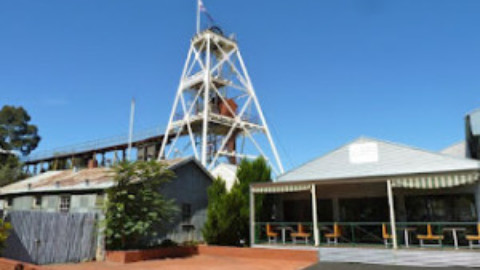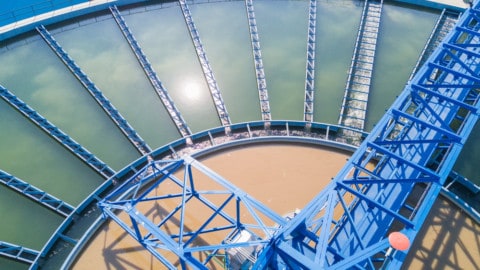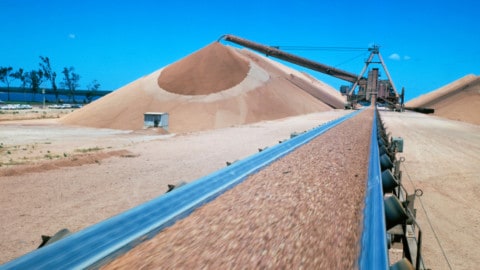There are a wide range of applications in the mining sector that require pumps, including raw water supply, dewatering, transporting slurry and tailings, leach and drainage solutions, chemical dosing, transporting process water, truck washing, and dust suppression. Choosing the right pump for these applications is essential to ensure efficient and reliable operations, cost effectiveness, and safety for the workers and environment. Broadly, there are two categories of pumps that can be used, diesel-driven and electric-driven, and it is important to know which type is suitable for a particular application.
Traditionally, mining operations have relied on diesel driven pumps due to the remote location of mine sites and the flexibility of easily moving the equipment around, amongst other reasons. And while they continue to be a popular choice, electric-driven pumps are starting to be accepted as a versatile choice that offers environmental benefits and are cheaper to run with increasing prices for diesel.
Electric-driven pumps
Applications
Electric-driven pumps are ideal where continuous operation is required on-site. As long as they can remain connected to a stable, continuous power supply, they can run continuously without damage or failure. This feature means they are the first choice for applications that need to operate for more than 20 minutes per cycle, such as dewatering and industrial processes.
These pumps are portable, easy to handle, and can offer a small site footprint, making them suited to groundwater applications. They are also useful in applications where diesel pumps cannot be used, such as in underground mines, where emissions are not allowed and at high altitudes.
Power and flow
Electric-driven pumps are available in a variety of performances and can generally handle higher flow rates and head than diesel-driven pumps. For example, medium-tolarge electric submersible pumps typically have a power rating up to 80kW and manage flows up to 20,000L per minute with a head of 85m.
Wide operating range
Electric-driven pumps are very versatile, making them a good choice for mine sites as they can adapt to the everchanging needs of the site. For example, when paired with a variable frequency drive (VFD) the speed can be adjusted so that it can be used for multiple applications, meeting varying duty points to achieve the efficiency and performance specifications of each application. VFDs also allow electricdriven pumps to operate over a larger operating range on the performance curve.
Environmentally friendly and safe
With ESG integration becoming a focus in mine sites over recent years, along with concern about global warming and more stringent environmental regulations, electricdriven pumps provide a cleaner and more environmentally friendly option.
Diesel-driven pumps produce greenhouse gas emissions from burning fossil fuels, and spontaneous combustion from non-exhaust emissions and leaks are safety and environmental concerns. Spillages of fuel not only cause harm to flora, fauna and the environment, but it is also a safety hazard and can result in costly cleanup.
On the other hand, electric-drive pumps – especially those powered by solar, wind or other renewable energy sources – have a much lower environmental impact and eliminate the risk of fuel spillages.
Ease of maintenance
Electric-driven pumps can be extremely durable, with high wear resistance. These parts tend to be easy to maintain, for example, submersible pumps with their modular construction allow for simplified maintenance procedures, with some models also offering on-site servicing and parts replacement kits.
When paired with advanced controllers with data monitoring capabilities, the end user will be notified when service intervention is required, allowing for preventative maintenance without additional labour to manually check the pump.
Diesel-driven pumps
Applications
Diesel-driven pumps are designed to handle high volumes of water discharge, with discharge diameters for centrifugal pumps typically ranging from 75-200mm. They can work with clean or dirty water, as well as handle trash and fibrous materials.
When designed with features such as semi-open impellers and an abrasion-resistant pump casing, submersible diesel pumps can handle solids up to 76mm in size. This makes them ideal for transporting or raising water with large abrasion solids such as for quarry site dewatering and floodwater.
Fully automatic, self-priming diesel centrifugal pumps are the choice for fast dewatering solutions on sites where there is no other power source available. Their transportation and storage handling at remote sites is also made easier if they are equipped with forklift slots and a lifting eye.
Some pumps can also be equipped with an extra-large fuel tank to allow them to run for longer periods of time, reducing interruptions to work in order to refuel. Diesel-driven pumps are not suitable for use in high altitudes as it negatively affects performance and efficiency due to the lower pressure.
Furthermore, as the oxygen levels thin, a wider throttle opening would be needed to pull in an adequate amount of air, resulting in more fuel being burned. They should also be avoided being used in areas where there is a high risk that the fuel could spark an explosion, or where a spillage could harm wildlife or contaminate drinking water.
Flow and power
These pumps have a typical operating flow between 50-830m³/h, with a head of up to 51m. They are also able to operate in a variable speed range, allowing them to cover different applications and flow/head combinations.
Maintenance
Diesel-driven pumps are built for endurance and reliability. Compared to electric-driven pumps, they require more frequent maintenance, and operations need to be interrupted for refueling, which delays work and increases the final cost. However, new techniques have reduced the amount of maintenance required, with oil and filter changes only needed every 250-300 hours and they can run without maintenance up to 1,500 hours and still have factory warranty.
Selecting a pump
Both diesel and electric-driven pumps have benefits for mine sites depending on the specific site requirements. While electric-driven pumps have a cost benefit across the lifecycle of the pump in terms of maintenance and fuel, diesel-driven pumps remain the better choice in a number of circumstances.
One of the key determining factors of which type to choose, is the operating conditions. If there is no access to power on-site, diesel-powered pumps are likely to be the better option due to the additional cost of needing a generator.
Furthermore, if on-site power is not available across the mine site to allow an electric-driven pump to be used in multiple areas or applications, it may not be as cost-effective as a diesel-driven pump.
Diesel-driven pumps are also a good choice where it will be used across a site for temporary applications as installing permanent power to all the locations of temporary jobs within a site or sites is not a cost-effective solution.
However, where there is on-site power and it is cost-effective, electric-driven pumps can provide a better return on investment, as well as a more environmentally-friendly and safer option for mine operations.




















